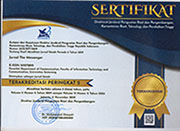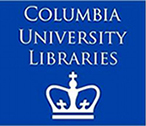The Role of Anonymity in the Flaming Activity on YouTube in Malaysia
Abstract
The term flaming refers to offensive language such as swearing, insults and hating comments. Anonymity renders an environment that encourages irresponsible acts by people to display offensive behaviors. The aim of this study is to examine the role of anonymity in the flaming activity in Malaysia. The Uses and gratification Theory was proposed in order to explain flaming and its relation to anonymity. In-depth interview was conducted with 10 flamers of YouTube and the data was analyzed thematically. The results concludes that most of the flamers kept their identity anonymous due privacy concerns and for the freedom of speech. The rest of the flamers used their real name as a form of publicity, identity defining and to boost their self-confidence. This study contributes practically in the enrichment of the data on flaming for the concerning parties such as Malaysian Communications and Multimedia Commission, and Cyber Security Malaysia.
Keywords
Full Text:
PDFReferences
Aiken, M., & Waller, B. (2000). Flaming among first-time group support system users. Information & Management, 37(2), 95 100.
Allen, J. P., & Land, D. (1999). Attachment in Adolescence. In J. Cassidy & P. R. Shaver (Eds.), Handbook of attachment: Theory, research, and clinical applications (pp. 319 335). New York: Guilford Press.
Blumer, J., & Katz, E. (1974). The uses of mass communication. Beverley Hills, CA: Sage.
Boyce, C., & Neale, P. (2006). Conducting in-depth interviews: A guide for designing and conducting in-depth interviews for evaluation input. Watertown: Pathfinder International.
Creswell, J. (2007). Qualitative inquiry and research design: Choosing among five approaches (2nd ed.). Thousand Oaks: Sage.
Creswell, J. (2012). Research design: Qualitative and quantitative approaches. Thousand Oaks: Sage.
Creswell, J., & Poth, C. N. (2017). Qualitative inquiry and research design: Choosing among five approaches (2nd ed.). Thousand Oaks: Sage.
Duncan, S., & Fiske, D. W. (2015). Face-to-face interaction: Research, methods, and theory (Vol. 3). Chicago: Routledge.
Etikan, I., Musa, S. A., & Alkassim, R. S. (2016). Comparison of convenience sampling and purposive sampling. American Journal of Theoretical and Applied Statistics, 5(1), 1 4.
Fearon, J. D. (1999). What is identity (as we now use the word). In Calif (Ed.), Unpublished manuscript. Standford: Stanford University.
Fernandez, A. (2017). Platformed racism: the mediation and circulation of an Australian race-based controversy on Twitter, Facebook and YouTube. Information, Communication & Society, 20(6), 930 946.
Froomkin, M. A. (1999). Legal issues in anonymity and pseudonymity. Information Society, 15(2), 112 127.
Guion, L. A., Diehl, D. C., & McDonald, D. (2011). Conducting an in-depth interview. University of Florida Cooperative Extension Service, Institute of Food and Agricultural Sciences, EDIS.
Haimson, O. L., & Hoffmann, A. L. (2016). Constructing and enforcing "authentic" identity online: Facebook, real names, and non-normative identities. First Monday, 21(6).
Haqqu, R., Hastjarjo, S., & Slamet, Y. (2019). Teenagers Entertainment Satisfaction in Watching Talk Show Program through Youtube. Jurnal The Messenger, 11(1), 38 45.
Hoffman, D. L., Novak, T. P., & Peralta, M. A. (1999). Information privacy in the marketspace: Implications for the commercial uses of anonymity on the Web. The Information Society, 15(2), 129 139.
Khan, M. L. (2017). Social media engagement: What motivates user participation and consumption on YouTube? Computers in Human Behavior, 66, 236 247.
Kirk, J., & Miller, M. L. (1986). Reliability and validity in qualitative research. California: Sage Publications Ltd.
Kwon, K. H., & Gruzd, A. (2017). Is Aggression Contagious Online? A Case of Swearing on Donald Trump s Campaign Videos on YouTube. In 50th Hawaii International Conference on System Sciences.
Lea, M., Spears, R., & Watt, S. E. (2007). Visibility and anonymity effects on attraction and group cohesiveness. European Journal of Social Psychology, 37(4), 761 773.
Levmore, S., & Nussbaum, M. (2010). The offensive Internet: Speech, privacy, and reputation. Cambridge, MA: Harvard University Press.
Lin, C. (1999). Online-service adoption likelihood. Journal of Advertising Research, 39(2), 79 90.
Marx, G. (1999). What s in a name? Some reflections on the sociology of anonymity. Information Society, 15(2), 99 112.
Mason, M. (2010). Sample size and saturation in PhD studies using qualitative interviews. Forum Qualitative Sozialforschung/Forum: Qualitative Social Research, 11(3). Retrieved from http://nbn-resolving.de/urn:nbn:de:0114-fqs100387
Merriam-Webster. (2014). Authentic. Retrieved May 16, 2017, from http://www.merriam-webster.com/dictionary/authentic
Moor, P. J., Heuvelman, A., & Verleur, R. (2010). Flaming on YouTube. Computers in Human Behavior, 26, 1536 1546.
Mulyadi, U., & Fitriana, L. (2018). Hashtag (#) as Message Identity in Virtual Community. Jurnal The Messenger, 10(1), 44 53.
Nissenbaum, H. (1999). The meaning of anonymity in an Information Age. Information Society, 15(2), 141 144.
Olins, W. (2017). The new guide to identity: How to create and sustain change through managing identity. Abingdon: Routledge.
Reinig, B., & Mejias, R. (2004). The effects of national culture and anonymity on flaming and criticalness in GSS-supported discussions. Small Group Research, 35(6), 698 723.
Scott, S., & Orlikowski, W. (2012). Great expectations: The materiality of commensurability in social media. In P. M. Leonardi, B. Nardi, & J. Kallinikos (Eds.), Materiality and organizing: Social interaction in a technological world (pp. 113 133). New York: Oxford University Press.
Sekaran, U., & Bougie, R. (2016). Research methods for business: A skill building approach. United Kingdom: John Wiley & Sons.
Silverman, D. (2016). Qualitative research. California: Sage Publications.
Wallace, K. . (1999). Anonymity. Ethics and Information Technology, 1, 23 35.
Wayner, P. (1999). Technology for anonymity: Names by other nyms. The Information Society, 15(2), 91 97.
DOI: http://dx.doi.org/10.26623/themessenger.v11i1A.832
Refbacks
- There are currently no refbacks.
Copyright (c) 2019 Jurnal The Messenger
View My Stats [Jurnal The Messenger] is an International Scientific Journal, Published by the Department of Communication, Faculty of Information Technology and Communication, Universitas Semarang (Central Java, Indonesia). It is licensed under a Creative Commons Attribution 4.0 International License.



_11.jpg)




_BARCODE.jpg)
_BARCODE1.jpg)



5.png)










2.png)





